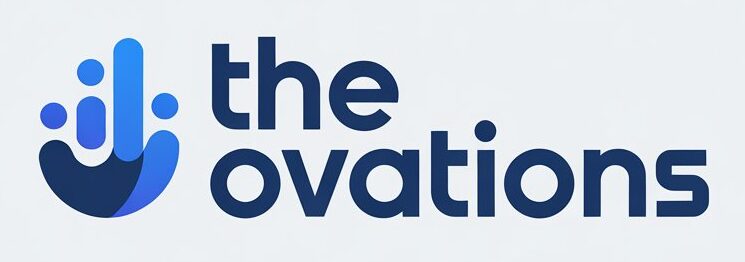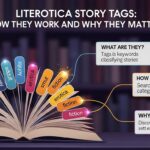Literotica Story Tags is one of the internet’s largest creative-writing communities, known for user-generated stories across a wide range of genres. One of the most important features that helps readers find content—and helps writers reach the right audience—is the platform’s story tagging system. Understanding how these tags work can dramatically improve navigation, discovery, and overall user experience.
This article explores the structure, purpose, and best practices for using Literotica story tags in a safe, educational, non-explicit way.
What Are Literotica Story Tags?
Story tags on Literotica act like metadata labels added to each piece of writing. These tags help categorize stories based on:
-
Theme
-
Style
-
Tone
-
Audience
-
Character types
-
Relationship dynamics
-
Plot elements
-
Writing format
These tags make searching and filtering easier, especially considering the platform hosts tens of thousands of user submissions.
Why Story Tags Matter
1. Efficient Navigation
Readers can quickly locate stories that match their preferences without scrolling endlessly.
2. Better Story Recommendations
Tags help the platform’s sorting and suggestion algorithms connect users with similar content.
3. Ethical Transparency
Tagging ensures that readers have a clear idea of the themes before opening a story, which promotes informed choices and avoids unexpected content.
4. Community Organization
With such a large library, tags maintain structure and prevent disorganization among thousands of categories and submissions.
Common Categories of Literotica Story Tags
While tags vary widely, most fall into the following non-explicit groups:
1. Genre Tags
These indicate the overall theme or narrative style, such as:
-
Romance
-
Drama
-
Mystery
-
Adventure
-
Fantasy
2. Character-Based Tags
These describe characters’ relationships or roles, without explicit details:
-
Friends
-
Strangers
-
Couples
-
Married partners
3. Tone & Style Tags
These specify storytelling voice and mood:
-
Humorous
-
Emotional
-
Dark
-
Lighthearted
-
Slow-paced
-
Fast-paced
4. Format Tags
These refer to the structure of the story:
-
Series
-
Short story
-
Episodic
-
First-person narration
-
Third-person narration
5. Content-Indicator Tags
These labels let readers know what elements are part of the story, helping them filter according to comfort level. They maintain transparency and set expectations about themes.
How Writers Should Use Literotica Story Tags
Proper tagging benefits both writers and readers. Here’s how authors can use tags effectively:
1. Be Accurate
Tags should reflect what the story truly contains, not what the author thinks will get more clicks.
2. Avoid Over-Tagging
Too many tags can confuse readers; instead, choose the most relevant ones.
3. Think Like a Reader
Ask: What themes or elements would someone want to know before they open this story?
4. Use Tags to Attract the Right Audience
Accurate tags help ensure the story is recommended to users who will appreciate it.
5. Follow Platform Rules
Literotica provides guidelines on appropriate tagging to protect users from misleading or harmful classification.
How Readers Benefit from Story Tags
1. Personalized Discovery
Tags make it easy to filter content according to tone, story structure, and theme.
2. Avoiding Mismatched Expectations
No one wants to start a story only to find it’s not the type of narrative they were looking for.
3. Browsing Niche Interests
Tags help users explore more specific categories without requiring manual searches.
4. Tracking Reading Preferences
Readers can learn what themes or styles they enjoy most.
Best Practices for Using Story Tags as a Reader
-
Use multiple tag filters for more accurate results.
-
Check tag combinations to see recurring patterns.
-
Bookmark tagged categories you revisit often.
-
Use tags to discover new authors who write within your preferred themes.
How Literotica Moderates Story Tags
The platform employs both automated tools and community reporting to ensure that tags:
-
Follow guidelines
-
Accurately match the story
-
Do not mislead readers
-
Comply with legal and ethical standards
Incorrect or deceptive tagging can lead to editing requests or removal of the submission.
How Story Tags Improve the Writing Community
Encouraging Creativity
Tags often inspire writers to experiment with new genres or formats.
Supporting Organization
They help maintain an accessible archive of content.
Promoting Reader Satisfaction
Correct tagging reduces confusion and improves user trust.
Story Tags and Search Engine Optimization (SEO) Within the Platform
Tags also function like internal SEO. Well-tagged stories:
-
Rank better in category search
-
Appear more frequently in suggestions
-
Receive more engagement because they reach interested readers
Writers who treat tags as strategic tools often see higher readership.
Future of Literotica Story Tags
As community standards evolve, tagging systems will likely become:
-
More refined
-
More interactive
-
More personalized
-
Better moderated through AI
Future tools may allow multi-layered tags or reader-generated tagging for more accurate classification.
Conclusion
Literotica story tags are essential for organizing the platform, helping readers find relevant content, and enabling writers to reach the right audience. They support transparency, safety, and user satisfaction by setting clear expectations before a story is opened. Whether you’re a reader or a writer, understanding how these tags work makes navigating Literotica significantly easier and more enjoyable.






